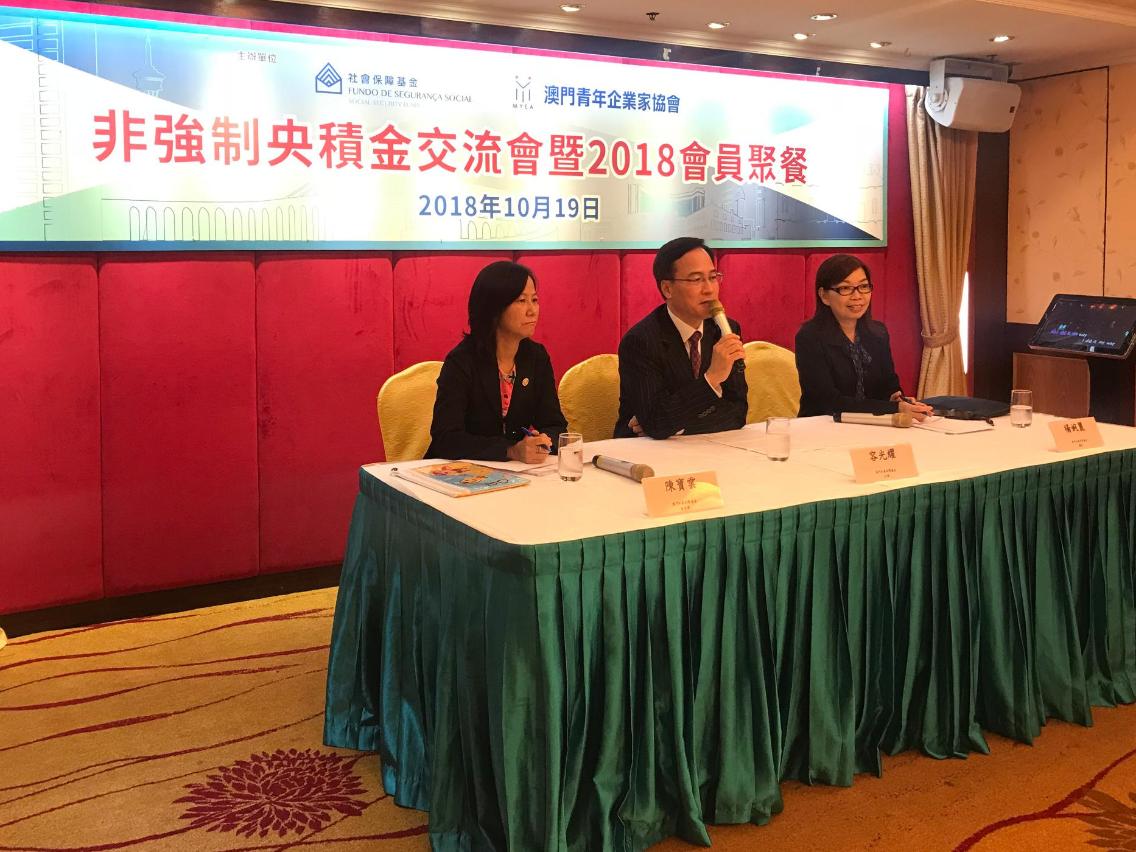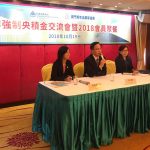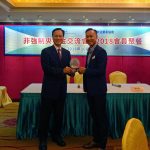 President Iong Kong Io visits the Macau Youth Entrepreneur Association to promote the non-mandatory central provident fund system.
President Iong Kong Io visits the Macau Youth Entrepreneur Association to promote the non-mandatory central provident fund system.
In order to deepen the awareness of young employers on the non-mandatory central provident fund system and encourage their participation, Iong Kong Io, President of the Administrative Committee of the Social Security Fund (abbreviated to FSS in Macao), recently visited the Macau Youth Entrepreneur Association and exchanged views with members of the Association on the contents of the non-mandatory central provident fund system, and its latest development, on the theme of “Participating in Central Provident Fund System for Greater Peace of Mind in Your Retirement”.
In his speech, Iong said that the non-mandatory central provident fund system had been implemented since the beginning of this year, and the community had responded positively. So far, 91 employers have applied to join the joint provident fund scheme of the non-mandatory central provident fund system, and more than 33,000 people have applied to join the individual provident fund scheme. Participation in the central provident fund will enable the employer and employee to achieve a win-win situation because the central provident fund is a retirement protection system of cumulative type. The sooner the employer joins, the more favourable it is to accumulate retirement protection for the employee. On the other hand, the provision of good benefits is undoubtedly the best way to stabilize human resources and can be beneficial to the development of the business.
The young entrepreneurs attending the meeting paid more attention to the difference between the private pension plan and the central provident fund, and the interface between the two. Iong responded that the purpose of the central provident fund was to strengthen the old-age security of residents, and the System had a portability feature. The contribution balance at the time when the employee leaves a company will not be settled because of termination of a labour relationship and can be brought to 65 years of age in different ways; on the contrary, the model of private pension plan that requires immediate settlement of the contribution balance at the time when the employee leaves a company may not be suitable for the trend of pension development advocated by the World Bank now. It will affect one's old-age security to spend the pension too early. After the employer chooses to interface the original private pension plan to the central provident fund, the old employees who have participated in the private pension plan can choose to interface to the central provident fund, or choose to remain in the private pension plan; employees who have not joined the private pension plan or the new hires can only choose whether to participate in central provident fund. In order to attract employer’s participation, the contributions of the non-mandatory central provident fund system paid by the employer for the employee can be regarded as the operating costs. There is an extra two times of tax concession in the first three years of the entry into force of the System.
There were about 60 members of the Macau Youth Entrepreneur Association attending the event, including Ho Ka Lon, President; Lee Koi Ian, Executive Vice-President; Kevin Ho King Lun; Chairman, Chui Sai Kin; Chairman of the Board of Supervisors; Tam Kai Cho Alan, Secretary General; and the representatives of the FSS included Chan Pou Wan and Un Hoi Cheng, Vice-Presidents; Ieong Iun Lai, Head of Department of Central Provident Fund System; Kuong Kong Hong, Acting Head of Department of Social Security System; Ho Hoi Sang, Head of Division of General Affairs of Provident Fund System; and Kuok Tong Mui, Head of Division of Public Relations and Technical Support.



